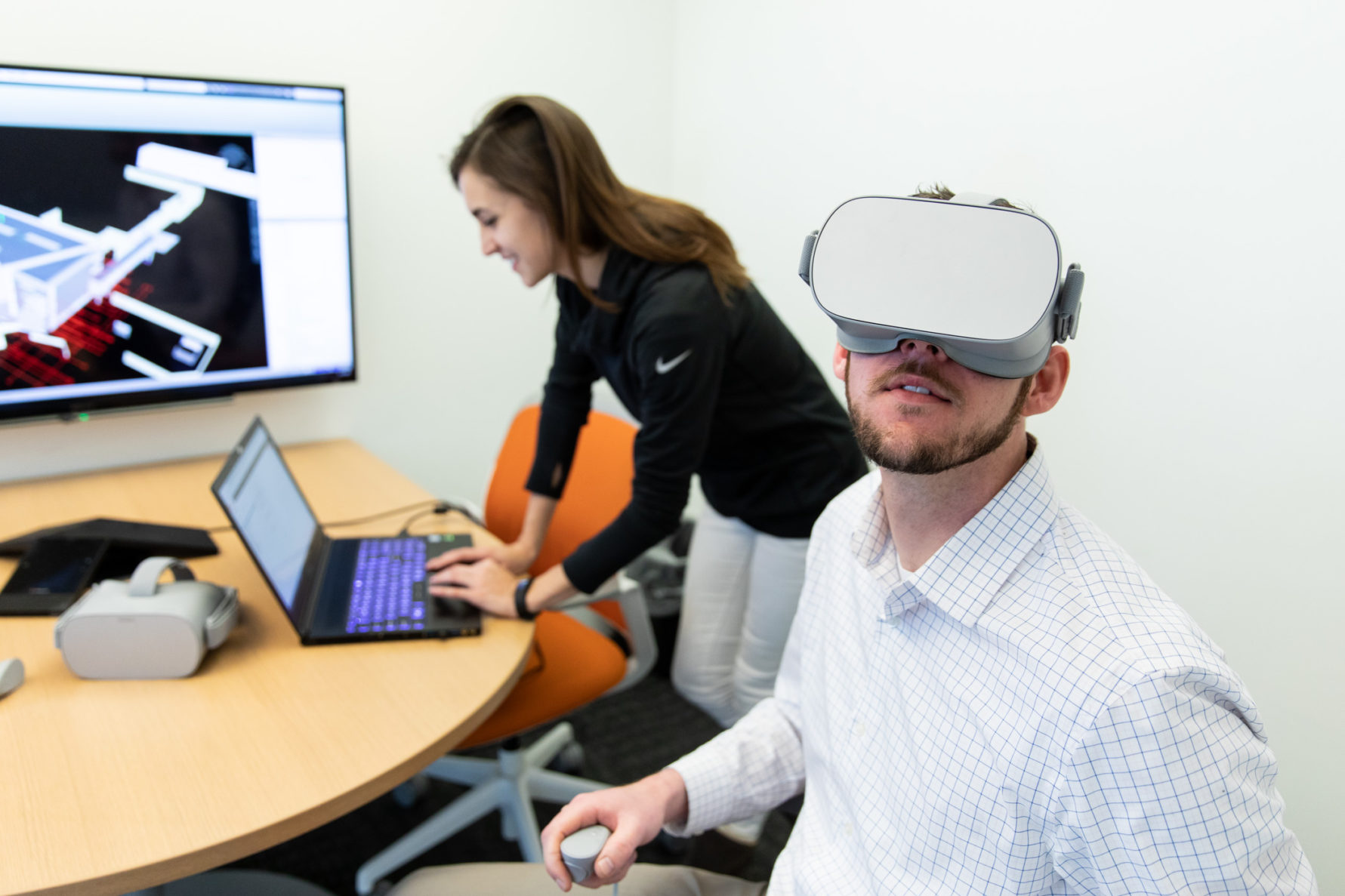Streamline the construction process with building performance solutions
A variety of specialty services offered by McCownGordon Construction provides clients with the ability to identify challenges and gain efficiencies before construction ever begins.

Streamline the Construction Process with Building Performance Solutions
A variety of specialty services offered by McCownGordon Construction provides clients with the ability to identify challenges and gain efficiencies before construction ever begins.
“When assessing a project and its budget, you want to have someone who knows the complex infrastructure systems and can help you determine if they’re the best fit for your needs,” said Emily Tilgner, P.E., WELL AP, Director of Engineering Services at McCownGordon. “The earlier you engage with us, the more impact we can have.”
McCownGordon’s building performance solutions includes MEP services, which encompasses Mechanical Electrical Pluming (MEP), Structural Engineering, Sustainability and Virtual Design and Construction. All provide distinctive value to clients.
Mechanical Electrical Pluming (MEP)
The bulk of a building’s infrastructure is not seen by the end user, but fundamentally impacts the functionality and operational cost. MEP systems are incredibly complex with a lot of moving parts, and can account for the majority of a construction project’s total cost.
“There’s a large amount of money dedicated to systems you usually can’t even see,” Tilgner said.
Clients want to ensure they’re getting the capability they require while staying within budget. Tilgner and her team work closely with trade partners and clients to evaluate their options. When comparing systems, such as rooftop units versus four-pipe hydronic air handling units, or testing systems to ensure the systems are performing to spec, Tilgner’s team does a thorough analysis.
“We do not take the place of the engineer of record. We serve as an extra quality assurance/quality control point to give clients confidence their building will work the way they want it to,” Tilgner said. “We’re there as a resource—facilitating discussions between all the players, so there is clear communication.”
Tilgner recalled one project where discrepancies surfaced during a system test. What the engineer, manufacturer and contractor found did not sync up.
“It turned out there was a manufacturing error,” Tilgner said.
Because they were working collaboratively as a team during preconstruction, they were able to find a solution before it became a larger issue.
Structural Engineering
Structural engineers play a pivotal role in the preconstruction phase, evaluating early design options, verifying estimates and managing the trade contractor selection process. These steps help clients by ensuring they get the best value for their budget, whether sourcing steel beams or selecting the most experienced trade partner for a specific project.
Evaluating the materials, trade partners and design intent, and focusing on how they all fit together to create a safe and lasting structure falls into the structural engineering realm.
While they bring tremendous value to the preconstruction process, structural engineers follow a project through the construction process as well.
The structural engineering team also brings their experience to bear reviewing project documents for accuracy, participating in meetings to coordinate with clients and partners, conducting site visits to help ensure quality control and providing expert support to the project team.
Virtual Design and Construction
The other specialty service McCownGordon offers is Virtual Design and Construction. This service combines technology with design expertise to map systems in 3D.
“We look at high-level modeling and logistics plans to evaluate systems virtually before construction begins,” Tilgner said.
They can use this technology to incorporate information from Building Information Modeling (BIM), surveys and scans to create a virtual reality walk-though for owners.
“This architectural evaluation offers a different viewpoint from MEP. It allows for a deeper level of specification,” Tilgner said.
Such tools are incredibly useful, especially in renovations when information might not be readily available on existing systems. The Virtual Design and Construction team can scan the building and incorporate their findings in a format that the design team can use in their modeling.
“There’s definite value in these tools,” Tilgner said. “Trade partners appreciate the heightened level of awareness they provide. Owners appreciate not having unexpected hiccups down the line.”
McCownGordon’s specialty services, from MEP services to Virtual Design and Construction, provide clients with invaluable guidance and insight as they consider their project goals and the lifecycle of their buildings.




